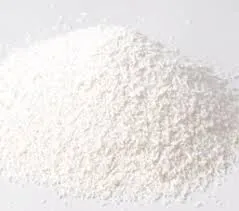
antacid aluminum hydroxide gel
Understanding Antacid Aluminum Hydroxide Gel An Overview
Aluminum hydroxide gel is a widely used antacid that plays a crucial role in alleviating symptoms associated with excess stomach acid. With its primary function focused on treating conditions such as heartburn, indigestion, and gastric ulcers, this compound has become a staple in both over-the-counter and prescription medications. This article delves into the properties, effectiveness, and considerations related to the use of aluminum hydroxide gel as an antacid.
Chemical Composition and Properties
Aluminum hydroxide, chemically represented as Al(OH)₃, is a potent base that neutralizes stomach acid (HCl) to form aluminum chloride and water. When presented as a gel, it exhibits enhanced stability and a more prolonged interaction time within the gastric environment. As a result, the gel form allows for a more effective and efficient delivery system, which can help to soothe gastric distress more quickly than some other forms of antacids.
Mechanism of Action
The primary mechanism by which aluminum hydroxide gel functions as an antacid is through neutralization. When the gel interacts with stomach acid, it reacts to lower the acidity of the gastric contents, thus alleviating the burning sensation associated with acid reflux. Furthermore, aluminum hydroxide exhibits a buffering capacity that can mitigate the fluctuations in pH levels, providing more sustained relief from acidity.
Effectiveness and Usage
Aluminum hydroxide gel is particularly effective in treating symptomatic relief rather than addressing the underlying causes of acid-related disorders. Commonly recommended dosages typically range from 5 to 15 mL taken after meals and at bedtime. It is important to follow specific guidelines on how and when to take the medication, as the timing can influence its effectiveness. Additionally, it is often utilized in combination with other antacids, such as magnesium hydroxide or simethicone, to enhance its therapeutic effects and reduce side effects.
antacid aluminum hydroxide gel

Potential Side Effects and Considerations
While aluminum hydroxide gel is generally considered safe for short-term use, it is not without potential side effects. Some common side effects include constipation, particularly when used in higher doses or for extended periods. This occurs because aluminum can interfere with bowel movements. Other side effects may include diarrhea, especially when aluminum hydroxide is combined with magnesium, which acts as a laxative.
Long-term use of aluminum-containing antacids poses additional risks. For instance, excessive aluminum intake could lead to toxicity, particularly in patients with impaired kidney function. Thus, it is crucial for users, especially those with preexisting kidney conditions, to consult healthcare professionals before prolonged usage of aluminum hydroxide gel.
Interactions with Other Medications
Aluminum hydroxide gel may also interact with a variety of other medications. This antacid can inhibit the absorption of certain drugs, including antibiotics and medications for osteoporosis. It is advisable to separate the intake of aluminum hydroxide gel from other medications by at least two hours to minimize any potential interactions that could impair drug effectiveness.
Conclusion
In conclusion, aluminum hydroxide gel stands out as an effective antacid for treating symptoms of excess stomach acid. Its mechanism of action, through the neutralization of gastric acid, provides relief for many individuals suffering from heartburn and related conditions. However, awareness of possible side effects and drug interactions is critical for safe use. Patients should remain informed and consult healthcare professionals for personalized recommendations, particularly when addressing chronic gastrointestinal issues or when combining treatments. With responsible use, aluminum hydroxide gel can serve as a valuable ally in maintaining digestive health and comfort.
-
Pure Sodium Dichloroisocyanurate Dihydrate | Powerful DisinfectantNewsAug.29,2025
-
Industrial Chemicals: Quality & Purity for Every IndustryNewsAug.28,2025
-
Nitrile Rubber Honoring Strict Production StandardsNewsAug.22,2025
-
Aspartame Ingredients Honoring Food Safety ValuesNewsAug.22,2025
-
Fertilizer for Balanced Plant NutritionNewsAug.22,2025
-
Cyanide Gold Processing with High Purity AdditivesNewsAug.22,2025
-
Formic Acid in Textile Dyeing ApplicationsNewsAug.22,2025
Hebei Tenger Chemical Technology Co., Ltd. focuses on the chemical industry and is committed to the export service of chemical raw materials.
-

view more DiethanolisopropanolamineIn the ever-growing field of chemical solutions, diethanolisopropanolamine (DEIPA) stands out as a versatile and important compound. Due to its unique chemical structure and properties, DEIPA is of interest to various industries including construction, personal care, and agriculture. -

view more TriisopropanolamineTriisopropanolamine (TIPA) alkanol amine substance, is a kind of alcohol amine compound with amino and alcohol hydroxyl, and because of its molecules contains both amino and hydroxyl. -

view more Tetramethyl Thiuram DisulfideTetramethyl thiuram disulfide, also known as TMTD, is a white to light-yellow powder with a distinct sulfur-like odor. It is soluble in organic solvents such as benzene, acetone, and ethyl acetate, making it highly versatile for use in different formulations. TMTD is known for its excellent vulcanization acceleration properties, which makes it a key ingredient in the production of rubber products. Additionally, it acts as an effective fungicide and bactericide, making it valuable in agricultural applications. Its high purity and stability ensure consistent performance, making it a preferred choice for manufacturers across various industries.





